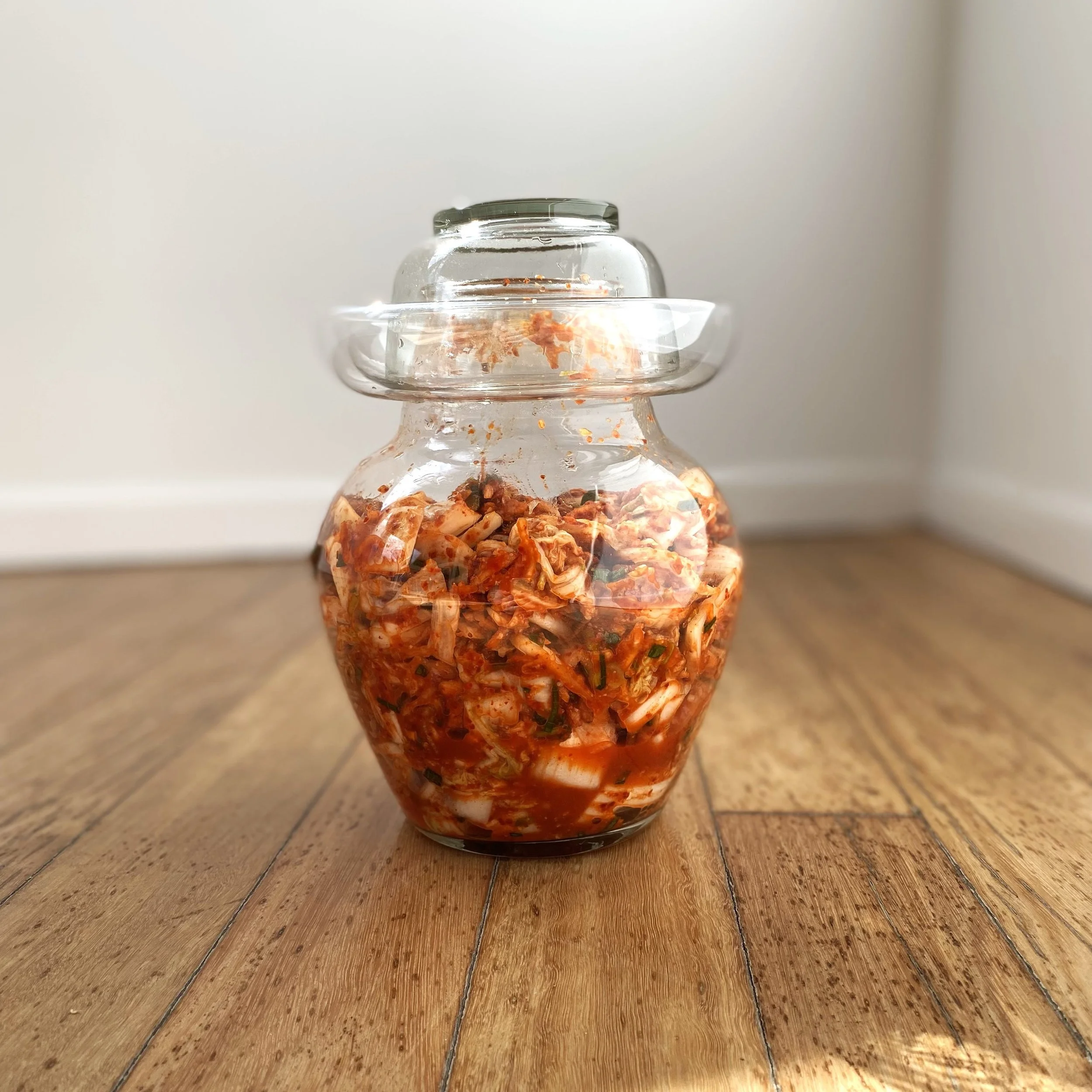김치 (kimchi)
I made kimchi last Saturday/Sunday and it’s been fermenting for almost 1 week! Mmmmm, it tastes so good!
I don’t recommend buying kimchi from a store. All of the kimchi products I’ve come across at the Asian grocer have contained additives (such as MSG) and those at the health food stores have been expensive. It’s cheap to make and you get more of it.
I’ve eaten my fair share of kimchi the last little while from various locations, including South Korea, and I’ve learnt that there are some okay ones and some seriously delicious ones. For this reason, don’t let your first kimchi tasting determine whether you like it or not. Keep trying it.
Kimchi is a traditional Korean fermented food made predominantly from cabbage and radish, with other vegetables and ingredients added too. Traditionally, kimchi can be fermented up to 1 month using jars called onggi. These are partially or totally buried underground. The Korean people LOVE kimchi and consume it daily.
Like other fermented foods, kimchi is rich in nutrients (such as vitamin B6, C and K, niacin, riboflavin, folate, iron, fibre and antioxidants) and probiotics (health promoting bacteria) thanks to the lacto-fermentation process that occurs.
Kimchi can be eaten on its own or added to literally anything, e.g. scrambled eggs, soup/stew, sushi, salad, rice, bread and the list goes on.
Making kimchi is a real art, something the Korean people celebrate. When I was in South Korea, I saw various learning institutions dedicated solely to making kimchi. Impressive.
To summarise, please try kimchi, and try making it! I think you’ll be pleasantly surprised.
Kimchi
Ingredients
1500g wombok cabbage (Koreans call it napa)
1/4 cup sea salt
150g daikon radish
150g carrot
3 spring onions, thinly sliced
35g garlic chives (optional)
50g onion
30g garlic
15g fresh ginger
65g apple
3 tbsp fish sauce (ensure zero additives)
3 tbsp cooked short-grain rice (e.g. arborio)
1/2 cup gochugaru / 고추가루 (Korean chili flakes)
Method
Wash your cabbage, making sure you run water through the leaves where dirt can hide. Cut the cabbage into 3x3 pieces (or larger squares) and remove the core. Add the cabbage and salt to a very large bowl and toss together using your hands.
Cover the cabbage with cold water and let it sit for 24 hours at room temperature. It’s probably a good idea to cover the top with cling wrap, just in case bugs like kimchi too.
The next day (24 hours later), thoroughly wash the salt from the cabbage and drain.
Using a knife, slice the radish, carrot, spring onions and garlic chives. Set aside.
Add to a food processor the onion, garlic, ginger, apple, fish sauce and cooked rice, and pulse until you have a smooth paste.
Add to a large bowl the radish, carrot, spring onions, garlic chives (optional), gochugaru and paste from the food processor. Put on some food handling (or dishwashing gloves) and mix the ingredients together. Taste the mixture and add more gochugaru if you would like more spice.
Add this mixture to the large bowl of washed and drained cabbage, and using your gloved hands, mix the ingredients together. Take your time. It’s quite relaxing.
The kimchi is ready to be eaten however, I recommend storing it in a fermentation jar (as I have done) or fermentation container, to be left for at least 1 week to ferment. I stored mine in the fridge, just to be safe. Enjoy!

